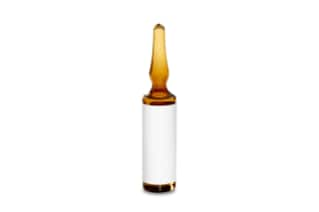
|
Separation Mode |
Reversed Phase |
|
Detection Method |
UV |
|
Formulation |
Liquid |
|
Storage Condition |
Room Temperature |
|
System Type |
LC |
|
Quantitative |
Yes |
|
Shelf Life |
36 Months |
|
Shelf life upon reconstitution |
1 Week |
|
Shipping Condition |
Ambient |
|
Tolarence |
0.005 |
|
Volume |
10 mL |
|
Type |
Installation |
|
UNSPSC |
41116107 |
|
Application |
System Performance |
|
Brand |
Waters |
|
Product Type |
Standards |
|
Units per Package |
1 pk |
Waters HPLC Absorbance PQ Test Solution
Elevate the accuracy and reliability of your liquid chromatographs with Waters HPLC Absorbance PQ Test Solution, a meticulously formulated reference solution designed to calibrate and troubleshoot UV/Vis absorbance detectors, containing a precise mixture of light-absorbing compounds for verifying instrument settings and swiftly identifying detector issues.
With Waters HPLC Absorbance PQ Test Solution, you benefit from its carefully calibrated composition, ensuring known and repeatable absorbance values, and instilling confidence in the accuracy of your lab equipment calibration. Troubleshooting becomes a breeze as the solution helps pinpoint detector problems like misaligned optics or a dirty flow cell, streamlining your efforts to resolve issues promptly.
This ready-to-use solution delivers unmatched convenience, saving you time and effort with its pre-prepared format. Ideal for a wide range of LC applications, Waters HPLC Absorbance PQ Test Solution serves quantitative and qualitative analyses, allowing you to quantify compound concentrations and identify specific compounds in your samples. Furthermore, it proves invaluable in troubleshooting LC instrument-related challenges.
Operating Waters HPLC Absorbance PQ Test Solution is straightforward; just inject it into your LC system and record the absorbance at the desired wavelengths. Armed with these absorbance values, you can confidently calibrate your instrument and address any detector concerns with precision. The ACQUITY UPLC H-Class PLUS System is the perfect system for use with this test solution.
Rest assured, Waters HPLC Absorbance PQ Test Solution prioritizes safety and ease of use, presenting a dependable solution that ensures the accuracy and reliability of your LC instrument. Additionally, it offers various packaging options, catering to your unique needs and usage patterns.
Discover the peace of mind and efficiency Waters HPLC Absorbance PQ Test Solution brings to your chromatographic analyses. From calibrating your instrument to quickly troubleshooting any detector issues, this reference solution empowers you to perform at your best, delivering consistent and precise results with every analysis.
How do I use Waters HPLC Absorbance PQ Test Solution?
To use Waters HPLC Absorbance PQ Test Solution, simply inject the solution into your LC and record the absorbance at the desired wavelengths. The absorbance values then be used to calibrate your instrument or to troubleshoot any problems with the detector. If you are using the solution for quantitative analysis, you will need to prepare a calibration curve. This can be done by injecting known concentrations of the solution and recording the absorbance values. If you are using the solution for qualitative analysis, you may need to use a different wavelength to better visualize the peaks.